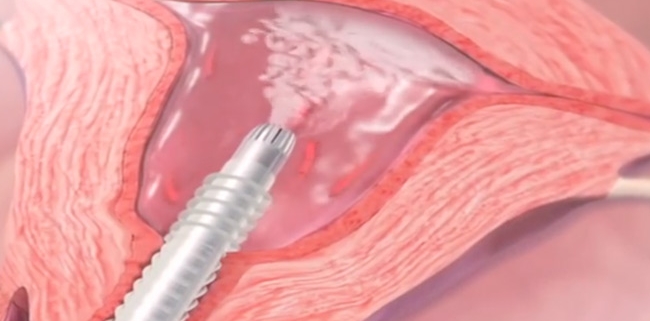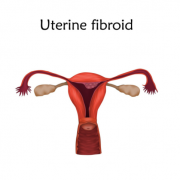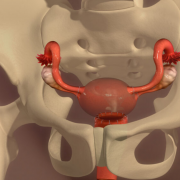HTA Endometrial Ablation for Menorrhagia
Endometrial Ablation may be an alternative treatment option for pre-menopausal women with menorrhagia (excessive uterine bleeding) due to benign causes, for whom childbearing is complete. Menorrhagia is frequently treated by performing a hysterectomy. The HTA® System is designed to ablate the endometrial lining of the uterus without the need for surgery.
Ask yourself the following questions:
- Does your period last longer than seven days?
- Do you use more than 3 pads or tampons per day?
- Do you pass clots during your periods?
- Does your heavy bleeding affect your work, social, athletic or sexual activities?
- Has medication (birth control pills) failed to help your heavy bleeding?
If you answer yes to any one of these questions, you are likely suffering from heavy menstrual bleeding or menorrhagia.
Endometrial ablation is a procedure to treat abnormal uterine bleeding. The procedure is intended to destroy all or most of the tissue that is responsible for menstrual bleeding (the endometrium). After the procedure, patients may never bleed again, or if they do, their bleeding is generally reduced. Not all patients experience a satisfactory reduction in bleeding so all treatment options should be discussed with your doctor. In general, approximately 50% of women that have the ablation have no more menstrual cycles. Of the 50% that do continue to have a cycle, most have little bleeding and are satisfied with their results. The overall satisfaction rate is approximately 95%.
What are the reasons for undergoing the procedure?
If heavy bleeding during your periods is affecting your quality of life and you believe your options are to wait until menopause or to have a hysterectomy, there may be other choices for help without major surgery.
Intended Benefits of the Hydro ThermAblator® System (HTA® System):
- A potential alternative to hysterectomy or other major surgical procedures.
- An outpatient procedure usually performed in the office with only local anesthesia.
- Decreased recovery period and generally fewer significant harmful side effects.
What is the HTA® System and how does the procedure work?
The Hydro ThermAblator System (HTA System) is a device that allows your gynecologist to perform endometrial ablation on an outpatient basis. This procedure involves your doctor inserting a probe into your uterus that includes a tiny telescope for viewing the lining of the uterus. Heated saline is circulated and is intended to destroy the lining of the uterus, even in a partial septate uterus or one with intra-mural fibroids ≤ 4cm, to eliminate or reduce bleeding to normal levels or less.
First, your cervix will be slightly dilated to allow the introduction of the telescope through the vagina, through the cervix and then into the uterus. This gives your gynecologist a view of the inside of your uterus to assure proper positioning. Then, your uterus will be filled with room temperature saline solution to gently clean and flush the uterus. The fluid will be heated to 90º C(194°F) and circulated in the uterus for ten minutes in order to treat the endometrium (lining of the uterus).
When the treatment is complete, the uterus will be flushed with room temperature saline to cool the uterus and the probe. All of the saline will be removed after the cooling phase is completed. Your uterine lining has been treated and will slough off similar to a menstrual period over the next few weeks.
Your gynecologist will do some pretreatment tests that may include a Pap smear, an ultrasound, endometrial biopsy, and/or a hysteroscopy (look inside the uterus with a tiny telescope) to see why you are having excessive menstrual bleeding.
Your physician will give you pain medication before the procedure to reduce cramping during or after the procedure. With the new technology and advancements available at MacArthur OB/GYN, most ablations are done in our office with only a local anesthesia injection.
After the procedure, you may experience some cramping that should go away by bedtime. You will probably have a pink or yellow watery discharge for a few weeks after your treatment. If you experience two days of heavy bleeding, abdominal or pelvic pain, a fever, or pain that increases over time beyond 24 hours after the procedure, call your physician.
Most women should be able to return to normal daily activities the next day. You should speak with your physician about the resumption of sexual activity. You should not use tampons for up to seven days after the procedure to reduce the potential risk of infection. Your monthly menstrual bleeding may be heavy for a few months after the treatment as a part of the healing process, and should improve after a few months.
You should not have this procedure if you desire pregnancy in the future. Endometrial ablation, however, does not prevent you from becoming pregnant and such a pregnancy would be high risk for both mother and fetus. Contraception or sterilization should be used after this treatment since pregnancy can still occur. Please discuss the different options with your physician. Also, all procedures carry risk. Ablation risk factors include bleeding, infection, damage to organs (uterine perforation, etc), and are something you should also discuss with your doctor.











